Managing Type 2 diabetes often means taking more than one pill a day. For many, that means juggling metformin, a DPP-4 inhibitor, an SGLT2 blocker, or a sulfonylurea-each with its own schedule, side effects, and cost. Combination medications were created to simplify this. Instead of three or four pills, you take one or two. But here’s the real question: can you switch to a generic version without risking your blood sugar control?
What Are Diabetes Combination Medications?
Diabetes combination medications mix two or more drugs into a single pill. Most combine metformin with another class of diabetes drug. Metformin is the foundation-it’s been used for decades, works well, and is cheap. The other drugs help in different ways: some reduce liver sugar production, others help your body use insulin better, or make your kidneys flush out extra glucose.Common combinations include:
- Metformin + sitagliptin (Janumet)
- Metformin + empagliflozin (Synjardy)
- Metformin + glipizide (Metaglip)
- Metformin + glyburide (Glucovance)
These aren’t just convenience pills. Studies show they lower HbA1c by 1.2% to 1.8% on average-much better than single drugs, which typically drop it by 0.7% to 1.0%. They also cut down pill burden, which improves adherence. One study found patients taking combination pills were 37% more likely to stick with their treatment than those on multiple separate pills.
Generic Options: What’s Available and What’s Not
As of 2025, only about 5 out of 25 diabetes combination medications in the U.S. have generic versions. The rest are still brand-only, protected by patents that won’t expire for years.Here’s the reality check:
- Metaglip (glipizide/metformin) has been generic since 2012. A 60-tablet supply costs around $19 cash-down from $345 for the brand.
- Glucovance (glyburide/metformin) went generic in 2010. You can get it for $15-$20 for 60 tablets.
- Janumet (sitagliptin/metformin) and Synjardy (empagliflozin/metformin) still have no generics. Synjardy costs nearly $600 for 30 tablets.
- Jentadueto (linagliptin/metformin) got FDA approval for a generic in 2023, but it won’t hit shelves until 2025 due to legal delays.
The good news? Generic versions of older combinations like Metaglip and Glucovance are widely available, stable, and trusted. The bad news? The newer, more advanced combinations-especially those with SGLT2 or DPP-4 inhibitors-are still locked behind patents. You won’t see generics for these until at least 2026.
Why Generic Substitution Can Be Risky
Switching from brand to generic sounds simple. But diabetes isn’t like switching painkillers. Small differences in how a drug is absorbed can change your blood sugar.The FDA requires generics to be 80-125% as effective as the brand in terms of how much drug enters your bloodstream. That’s a 45% window. For most drugs, that’s fine. For diabetes meds, especially sulfonylureas like glyburide or glipizide, even a slight shift can mean the difference between stable glucose and dangerous lows.
Real-world reports back this up:
- A user on Diabetes Daily reported recurrent hypoglycemia after switching from brand Glucovance to generic-later traced to faster absorption of glyburide.
- A 2022 survey of pharmacists found 12% had seen patients report unexpected side effects after switching combination meds.
- Endocrinologists from the American Association of Clinical Endocrinology noted 19% of their patients had treatment failures after automatic pharmacy substitutions.
It’s not that generics are unsafe. It’s that diabetes demands precision. Your body doesn’t care if the pill is made by Teva or Merck-it only cares if the glucose level drops to 65 or 45.
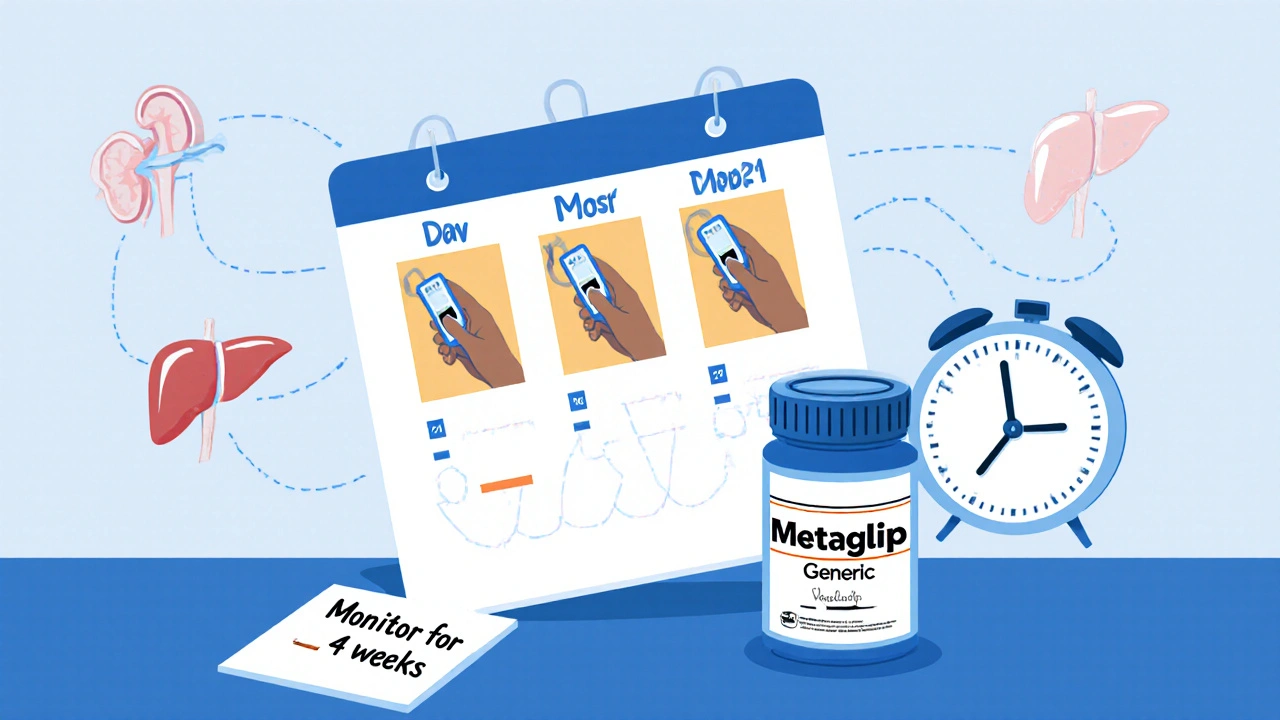
When Generic Substitution Works Best
There are clear cases where switching to generic combination meds is safe-and smart.Best scenarios:
- You’ve been on the brand version for over a year with stable HbA1c and no side effects.
- You’re on a long-established combo like Metaglip or Glucovance.
- Your doctor knows your history and approves the switch.
- You’re on a fixed dose that doesn’t need fine-tuning.
Patients who switch successfully often report:
- No change in blood sugar patterns
- Significant cost savings (85-95% cheaper)
- Same effectiveness after a 2-4 week adjustment period
A 2022 Joslin Diabetes Center survey found 76% of patients who switched to generic Metaglip had no issues. The key? They monitored closely and didn’t assume it was a silent swap.
What You Need to Do Before Switching
Don’t let the pharmacy switch your meds without you knowing. Here’s your action plan:- Ask your doctor if your current combination has a generic equivalent and whether it’s safe for you.
- Check your insurance. Many require generic substitution unless you file an exception. Ask if your plan has a preferred generic.
- Get a new prescription if switching from multiple pills to a combo-don’t just swap one pill for another.
- Monitor blood sugar 4 times a day for at least 2-4 weeks after switching. Watch for lows, highs, or unusual fatigue.
- Keep your pill bottle. Generics often look different-color, shape, markings. If your pill changes unexpectedly, call your pharmacist.
Many patients don’t realize that switching from brand to generic can mean switching from extended-release (XR) to immediate-release (IR). That changes how the drug hits your system. Metaglip XR doesn’t have a generic version yet-only the IR form. If your doctor prescribed XR for steady all-day control, an IR generic could cause spikes and crashes.
Cost vs. Risk: The Real Trade-Off
Yes, generics save money. A lot of it. But the real cost of a failed substitution isn’t just the price of a new prescription-it’s the ER visit for hypoglycemia, the missed work, the stress, the long-term damage from uncontrolled glucose.Here’s the numbers:
- Brand combination meds cost $2,850/year on average.
- Generic versions cost $420/year or less.
- But if substitution fails and HbA1c rises from 6.8% to 8.2%, your risk of kidney disease, nerve damage, or vision loss jumps by 40%.
That’s why experts say: Don’t choose based on price alone. Choose based on stability, monitoring, and medical guidance.
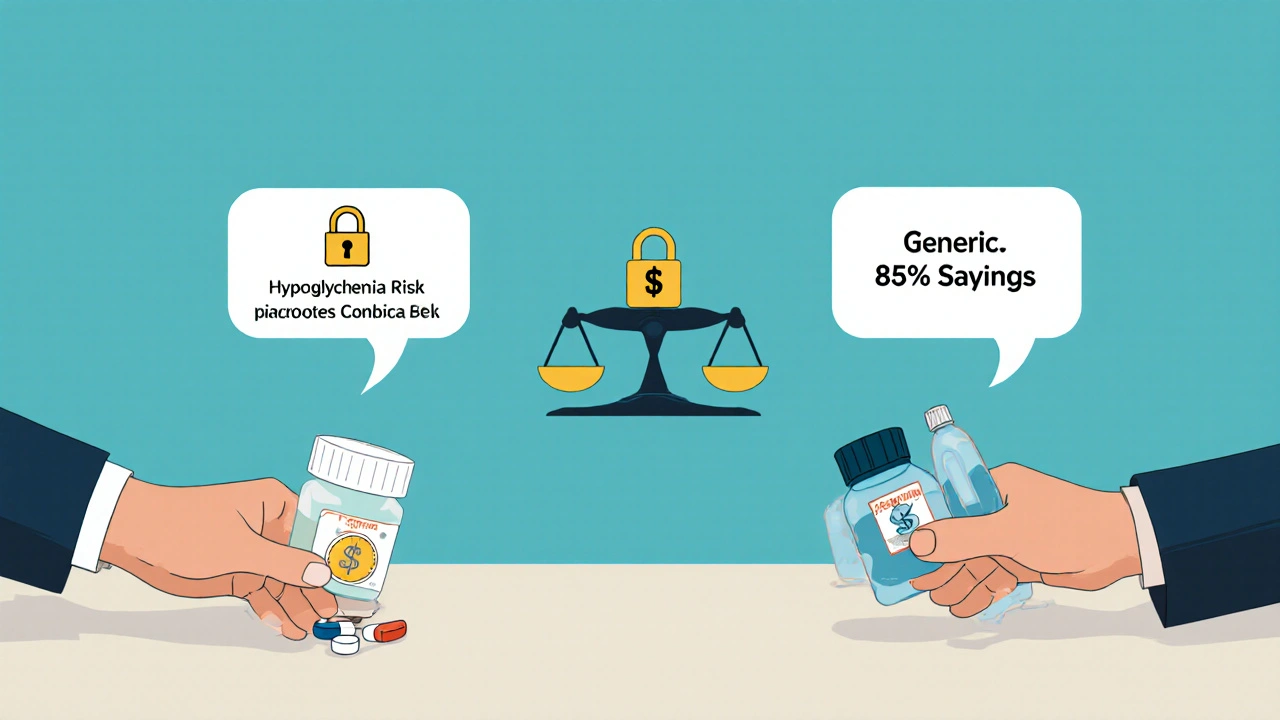
What’s Coming Next
Patents for Janumet XR and other DPP-4/metformin combos expire in 2025-2026. That means generics could hit the market soon. When they do, expect prices to drop 90%-just like with Metaglip.But new combinations using GLP-1 agonists (like semaglutide or dulaglutide) are already here. These won’t have generics for another 7-10 years. They’re expensive, but they’re also more effective and help with weight loss. For now, they’re only available as brands.
By 2030, the generic diabetes combo market is expected to grow 9.2% per year-faster than the brand side. More options will mean more choices. But also more confusion.
Final Advice: Know Your Meds, Know Your Options
You’re not just taking pills. You’re managing a chronic condition that affects every part of your body. Combination meds help. Generics can help more-by lowering costs.But never assume a generic is a drop-in replacement. Always:
- Talk to your doctor before switching.
- Test your blood sugar more often for the first month.
- Keep your old pill bottle until you’re sure the new one works.
- Report any changes-no matter how small-to your care team.
There’s no one-size-fits-all answer. But there is a smart way: informed, monitored, and patient-centered.
Can I switch from a brand diabetes combination pill to a generic without my doctor’s approval?
No. While pharmacies may automatically substitute generics under insurance rules, diabetes combination medications require medical oversight. Even small changes in drug absorption can affect blood sugar control. Always consult your doctor before switching, especially if you’ve had hypoglycemia or unstable glucose levels in the past.
Which diabetes combination meds have generic versions in 2025?
As of 2025, the only widely available generic combination diabetes medications are Metaglip (glipizide/metformin) and Glucovance (glyburide/metformin). Jentadueto (linagliptin/metformin) gained FDA approval for a generic in 2023 but won’t be available until 2025 due to patent litigation. Newer combinations like Janumet, Synjardy, and Invokamet still have no generics.
Why are some combination medications still brand-only?
Newer combinations, especially those with SGLT2 inhibitors (like empagliflozin) or DPP-4 inhibitors (like sitagliptin), are protected by patents that last 20 years from the date of filing. Many also have additional patents on formulations or delivery methods, which can extend exclusivity by several more years. These legal protections prevent generic manufacturers from entering the market until the patents expire.
Are generic diabetes combination pills as effective as brand-name ones?
For older combinations like metformin with glipizide or glyburide, generics are generally just as effective when used correctly. However, the FDA allows a wider range of bioequivalence (80-125%) for generics than what’s ideal for diabetes drugs. Some patients report minor differences in side effects or glucose control, especially if switching from extended-release to immediate-release formulations. Close monitoring is required after any switch.
What should I do if my blood sugar changes after switching to a generic?
Test your blood sugar more frequently-4 times a day for at least two weeks. If you notice frequent highs, lows, or unusual symptoms like dizziness or sweating, contact your doctor immediately. Do not adjust your dose on your own. Your provider may need to switch you back to the brand or adjust your treatment plan. Keep the packaging from both pills to show your doctor any differences in appearance or dosage.
Do generic diabetes meds have different side effects than brand-name ones?
The active ingredients are the same, so side effects should be similar. But differences in inactive ingredients (fillers, coatings, release mechanisms) can affect how quickly the drug is absorbed. Some patients report more gastrointestinal upset or unexpected hypoglycemia after switching, especially with sulfonylurea-based generics. These are not allergic reactions-they’re pharmacokinetic differences. Monitoring and communication with your provider are key.
Next Steps
If you’re on a brand-name combination med and want to switch:- Ask your doctor: “Is there a generic version of my medication? Is it safe for me?”
- Call your pharmacy: “Can I get the generic version? What’s the cost difference?”
- Set a reminder: Check your blood sugar 4 times daily for 4 weeks after switching.
- Keep your old prescription bottle until you’re sure the new one works.
If you’re on a generic and doing well-great. Keep monitoring. If you’re on a brand and can’t afford it, ask about patient assistance programs. Many manufacturers offer copay cards that cut costs by 75-100% for eligible patients.
Diabetes management isn’t about choosing the cheapest pill. It’s about choosing the right one-for your body, your life, and your future.

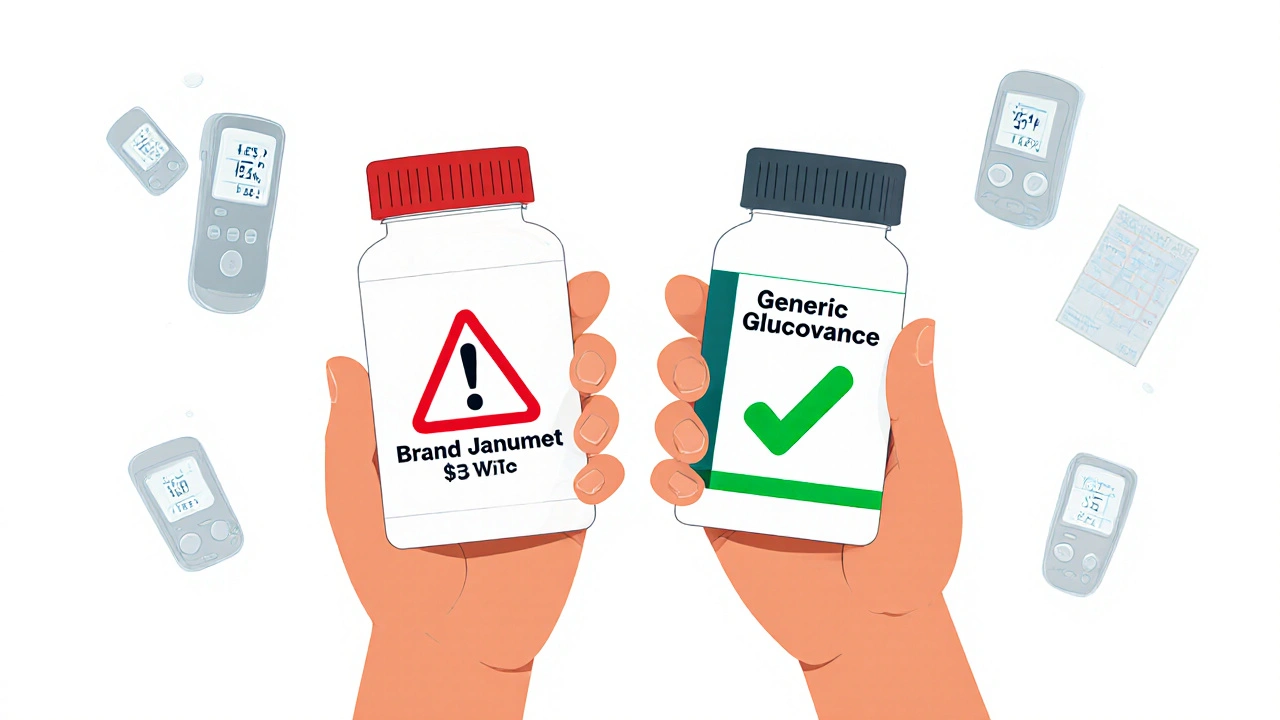


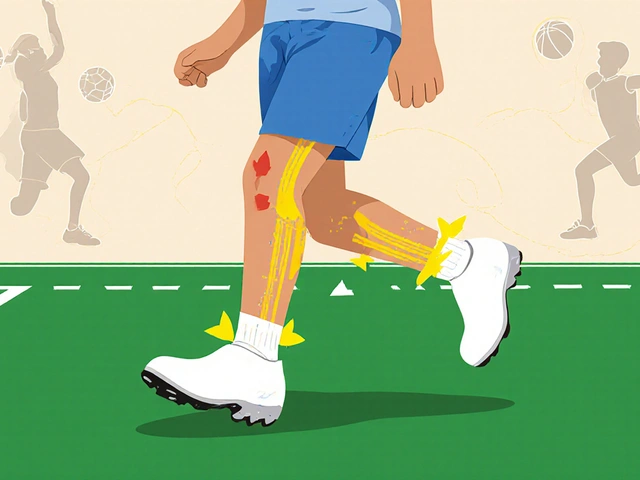
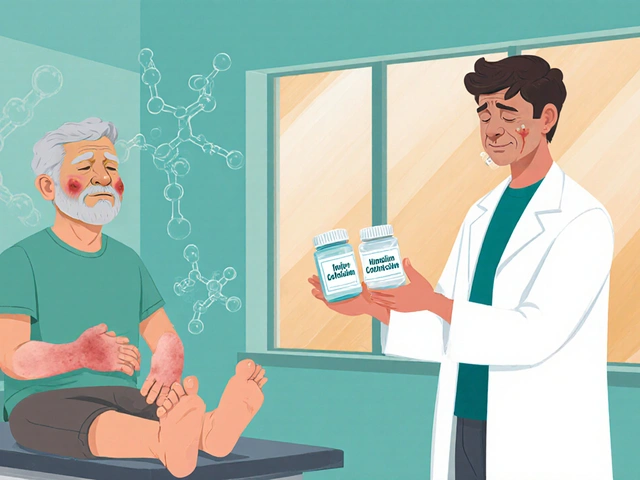

Andrew Forthmuller
November 12, 2025 AT 14:40Generic metformin combos are fine if you’re stable. But switch from brand Glucovance to generic and suddenly your sugars dip at 3 a.m.? Yeah, that’s not a myth.
Elizabeth Buján
November 14, 2025 AT 01:25i swear i switched to the generic glipizide/metformin last year and thought i was gonna die for a week-sweating, shaky, zero energy. thought it was stress. turns out the generic absorbed faster. my doc didn’t even warn me. why do they just swap it without asking??
vanessa k
November 14, 2025 AT 10:25My grandma’s on Glucovance generic. She checks her sugars religiously now. Said she didn’t notice anything until she started writing it down. Now she has a little notebook. Smart move.
Nicole M
November 15, 2025 AT 11:00Wait-so Jentadueto’s generic is finally coming? I’ve been waiting for this since 2023. My copay’s killing me.
manish kumar
November 16, 2025 AT 10:02Let me tell you something about generics and diabetes-this isn’t just about cost, it’s about bioavailability, pharmacokinetics, and individual metabolic variance. In India, we’ve seen patients on generic glyburide/metformin develop unpredictable hypoglycemia because the tablet disintegration time varied by 22% across batches. The FDA’s 80-125% window is a statistical loophole, not a clinical guarantee. For a drug that regulates your body’s glucose homeostasis, that’s a terrifying margin. You’re not just taking a pill-you’re gambling with your pancreas, your kidneys, your nerves. And no, the pharmacy doesn’t care if you crash at 2 a.m. They just want to hit their quarterly savings target.
Arpita Shukla
November 17, 2025 AT 02:45Actually, the 2022 Joslin study had a selection bias-they only included patients who were already compliant. The real failure rate is higher. Also, extended-release metformin generics don’t exist? That’s because the formulation patent is still active. The generic makers just copy the immediate-release version and call it a day. You think that’s safe? Think again.
Benjamin Stöffler
November 17, 2025 AT 15:46Let’s be clear: the FDA’s bioequivalence standard for generics is a joke. 80–125%? That’s not ‘equivalent’-that’s ‘might as well be different.’ Imagine if your car’s fuel efficiency was allowed to vary by ±45% just because it was a ‘generic’ brand. You’d sue. But when it’s your blood sugar? Nah. We just shrug and say, ‘Well, it’s cheaper.’ And then we end up in the ER. And the pharmaceutical companies? They’re laughing all the way to the bank-because they patented the damn delivery system, not just the molecule. Genius. Truly.
David Barry
November 18, 2025 AT 23:44Let’s cut through the noise. The only reason these generics are even allowed is because the FDA doesn’t have the resources to test every batch for diabetes-specific pharmacokinetics. It’s regulatory laziness. And now, because of it, you’ve got thousands of patients on suboptimal meds. The real cost? Not $420/year. It’s $12,000/year in ER visits, dialysis, amputations. You think generics save money? They just shift the burden from your wallet to Medicare’s.
Mark Rutkowski
November 19, 2025 AT 23:14There’s something deeply human about this whole mess. We treat diabetes like a math problem-take pill, lower sugar, done. But your body doesn’t do math. It remembers. It adapts. It holds grudges. When you swap a pill you’ve trusted for years for one that looks different, smells different, dissolves differently-you’re asking your body to trust again. And sometimes, it just says no. Not because the drug is bad. But because you changed the ritual. And for someone managing this daily, that ritual is everything.
Ryan Everhart
November 20, 2025 AT 02:39So… you’re telling me the pharmacy can swap my $600 pill for a $20 pill without telling me, but I’m not allowed to swap my coffee brand without a 10-page form? Yeah, that tracks.
Samantha Wade
November 21, 2025 AT 14:19As a clinical pharmacist with over 15 years in endocrinology, I’ve seen too many patients experience destabilization after automatic substitution. The FDA’s bioequivalence thresholds were designed for antibiotics and antihypertensives-not glucose-regulating agents with narrow therapeutic windows. I routinely counsel patients to request brand-name prescriptions with a ‘Dispense As Written’ note on the script. It’s not about cost-it’s about safety. And if your insurance denies it, file an appeal with your HbA1c numbers attached. You’re not being difficult-you’re being responsible.
Alyssa Lopez
November 23, 2025 AT 05:39Look, America needs to stop coddling diabetics. If you can’t afford the brand, you shouldn’t be on the combo med. Just go on metformin alone and eat less sugar. Problem solved. Generic or not, if you’re too lazy to manage your diet, don’t blame the pill. We’re not paying for your bad choices.